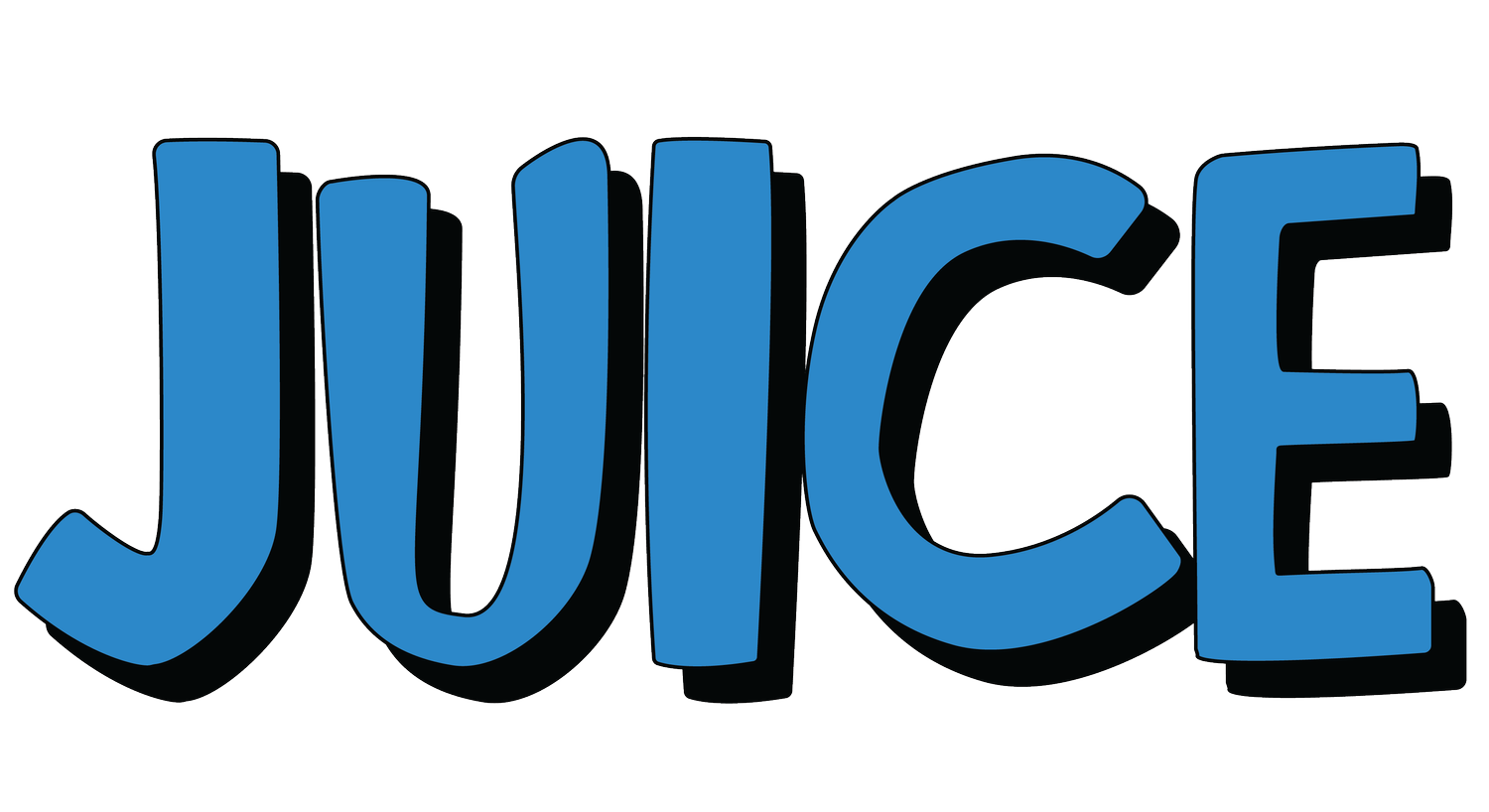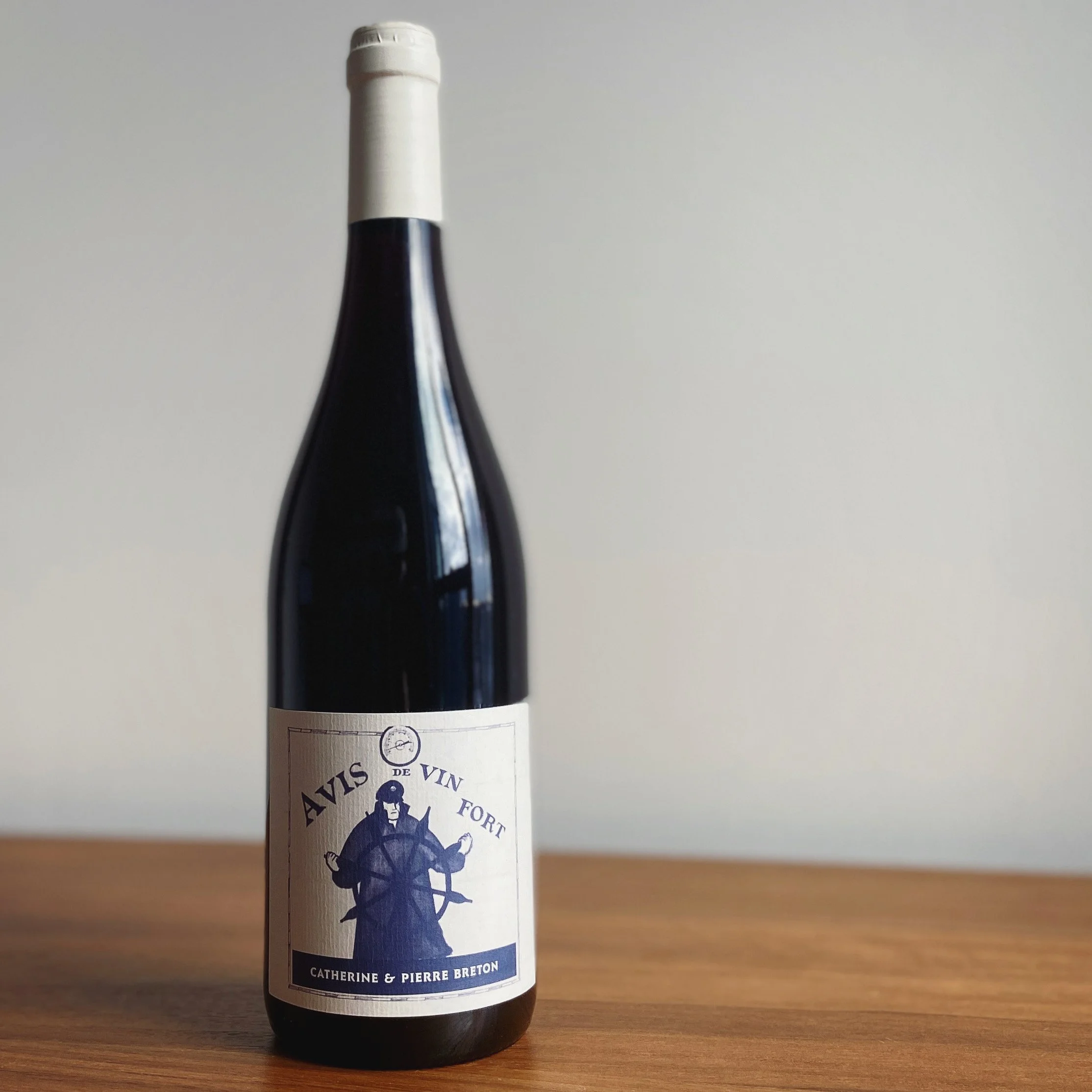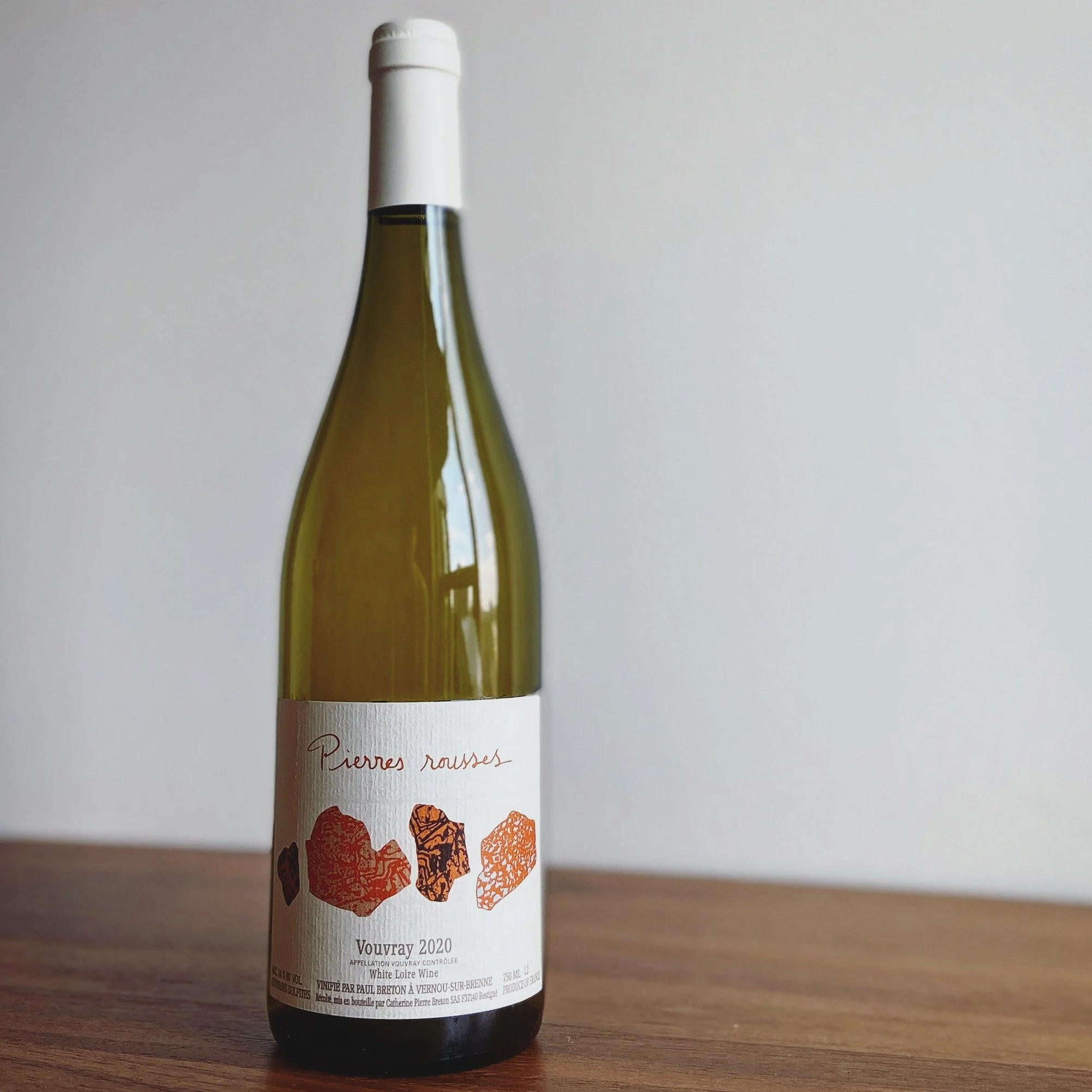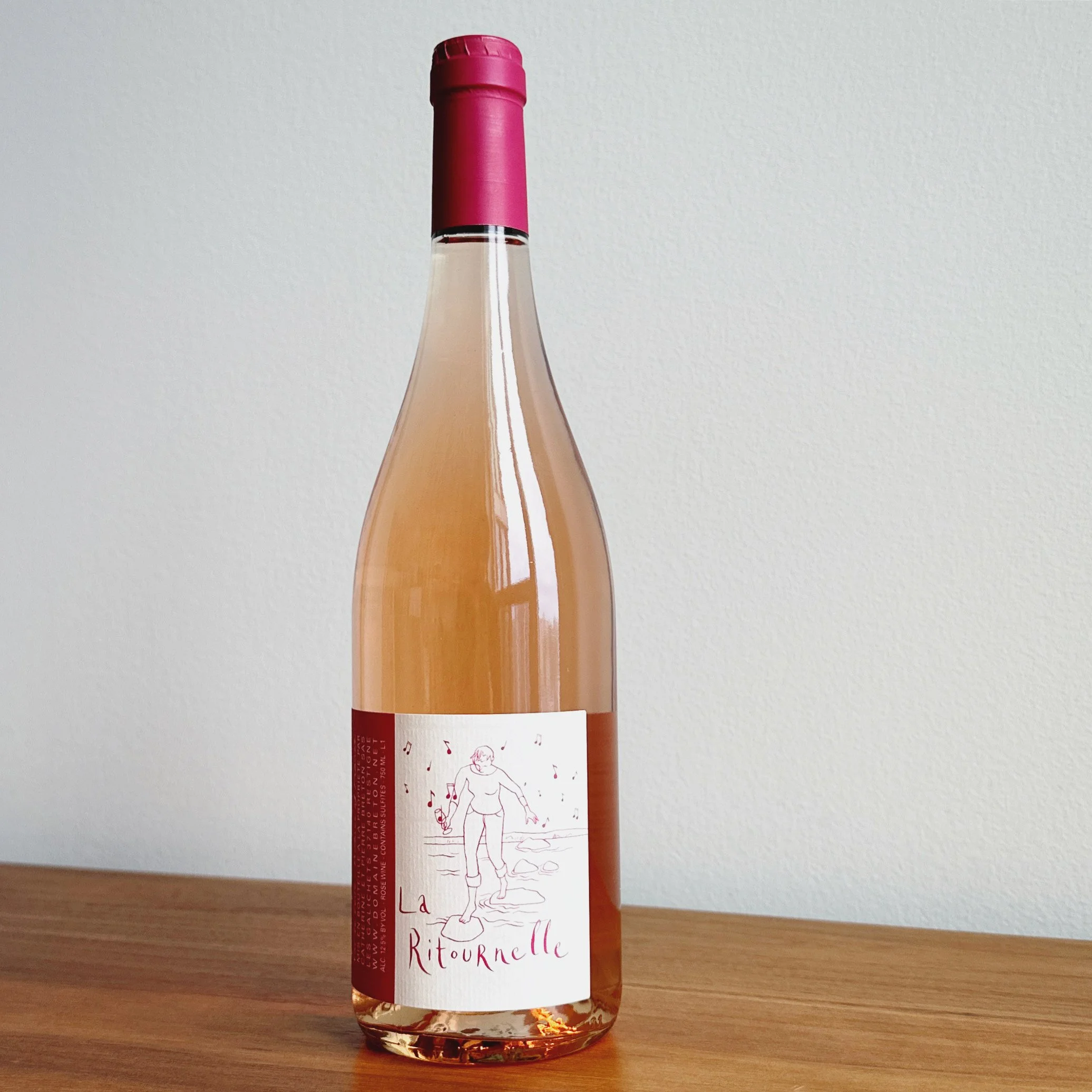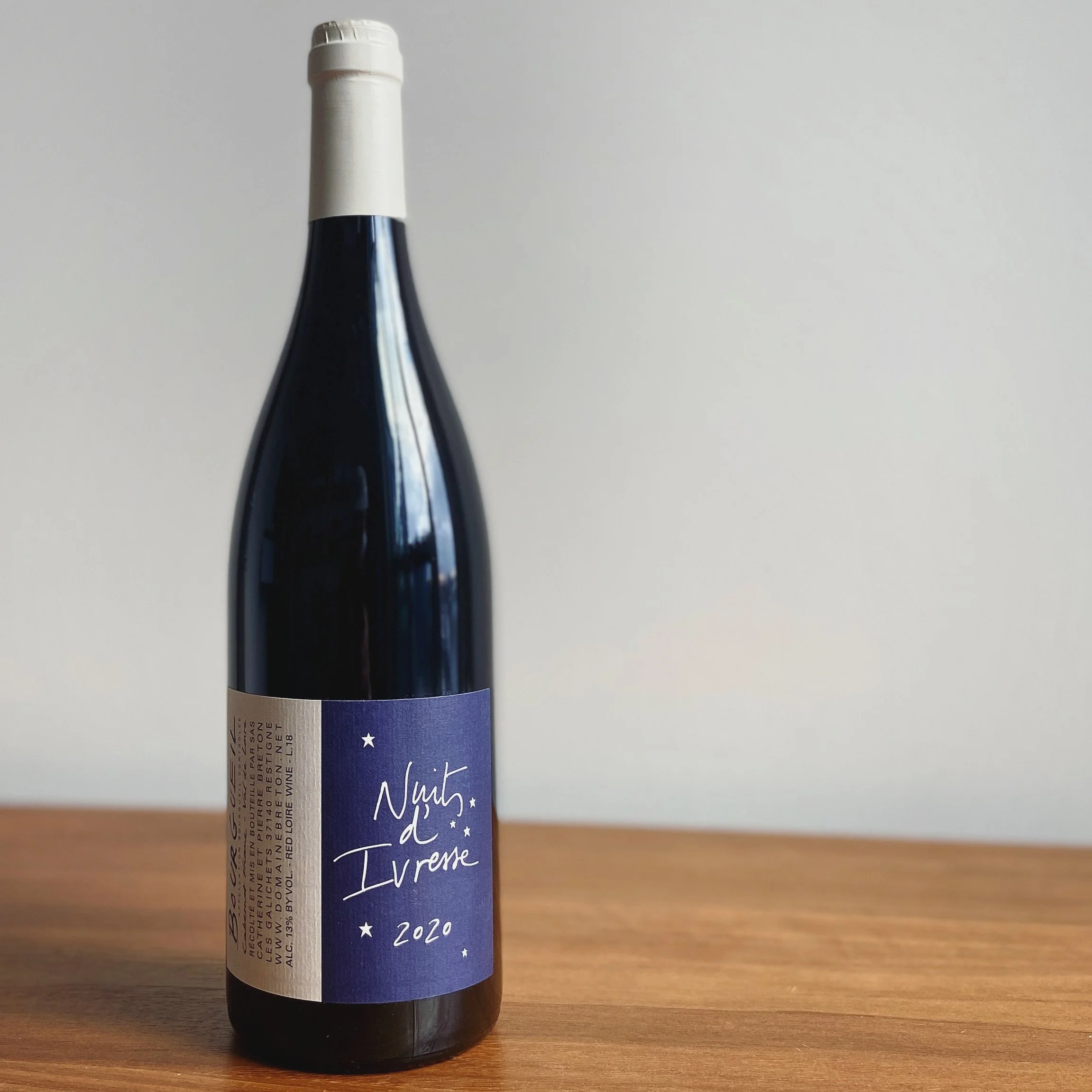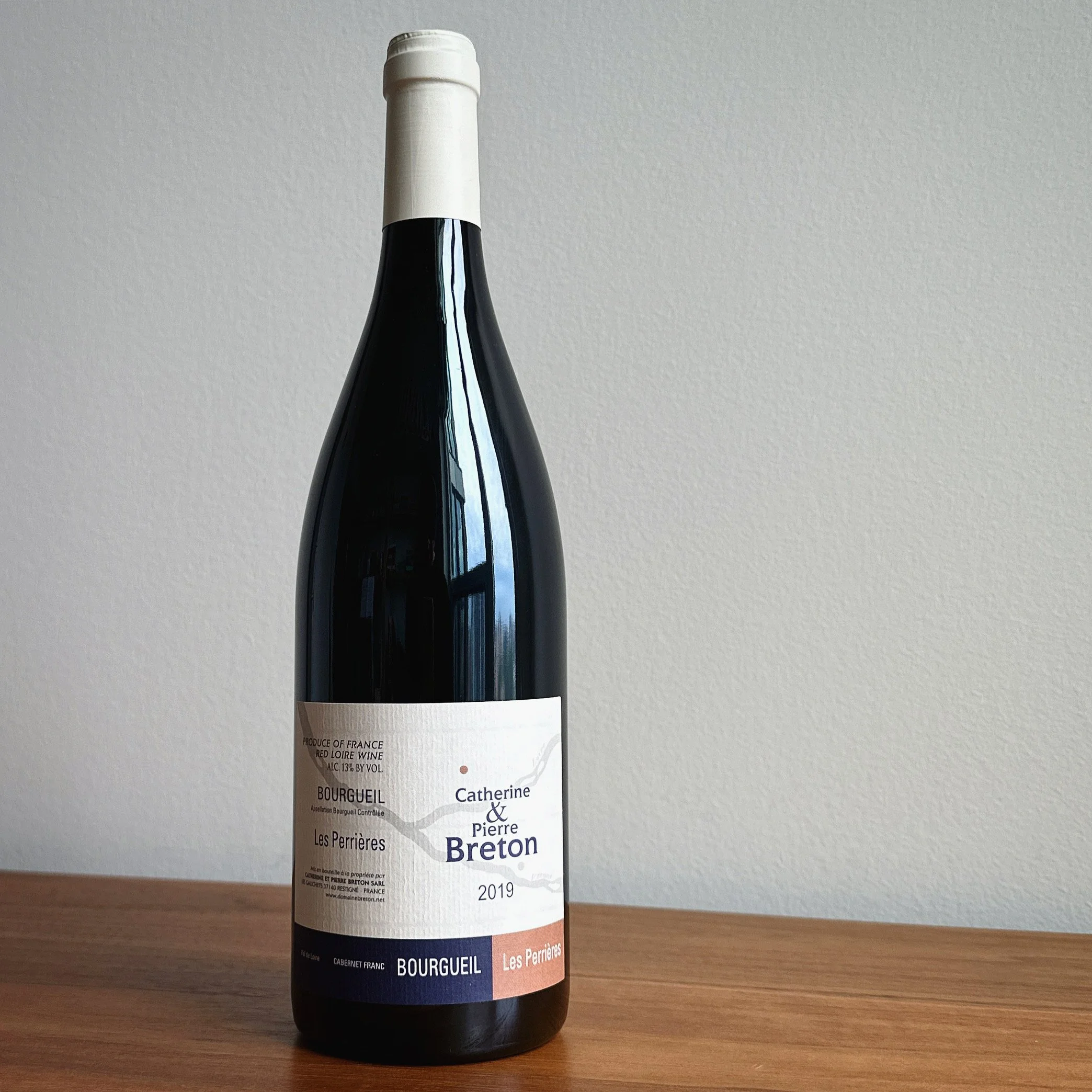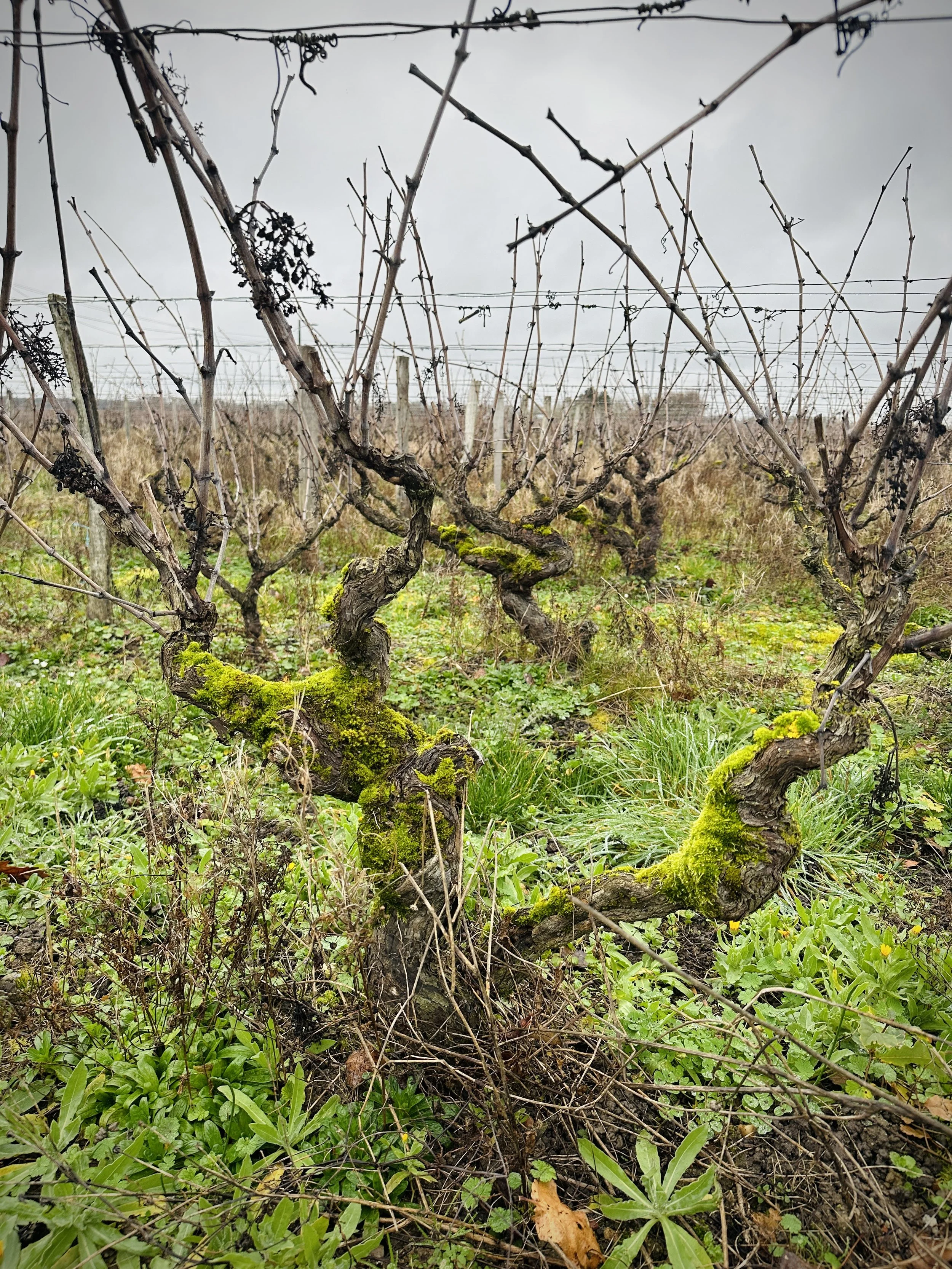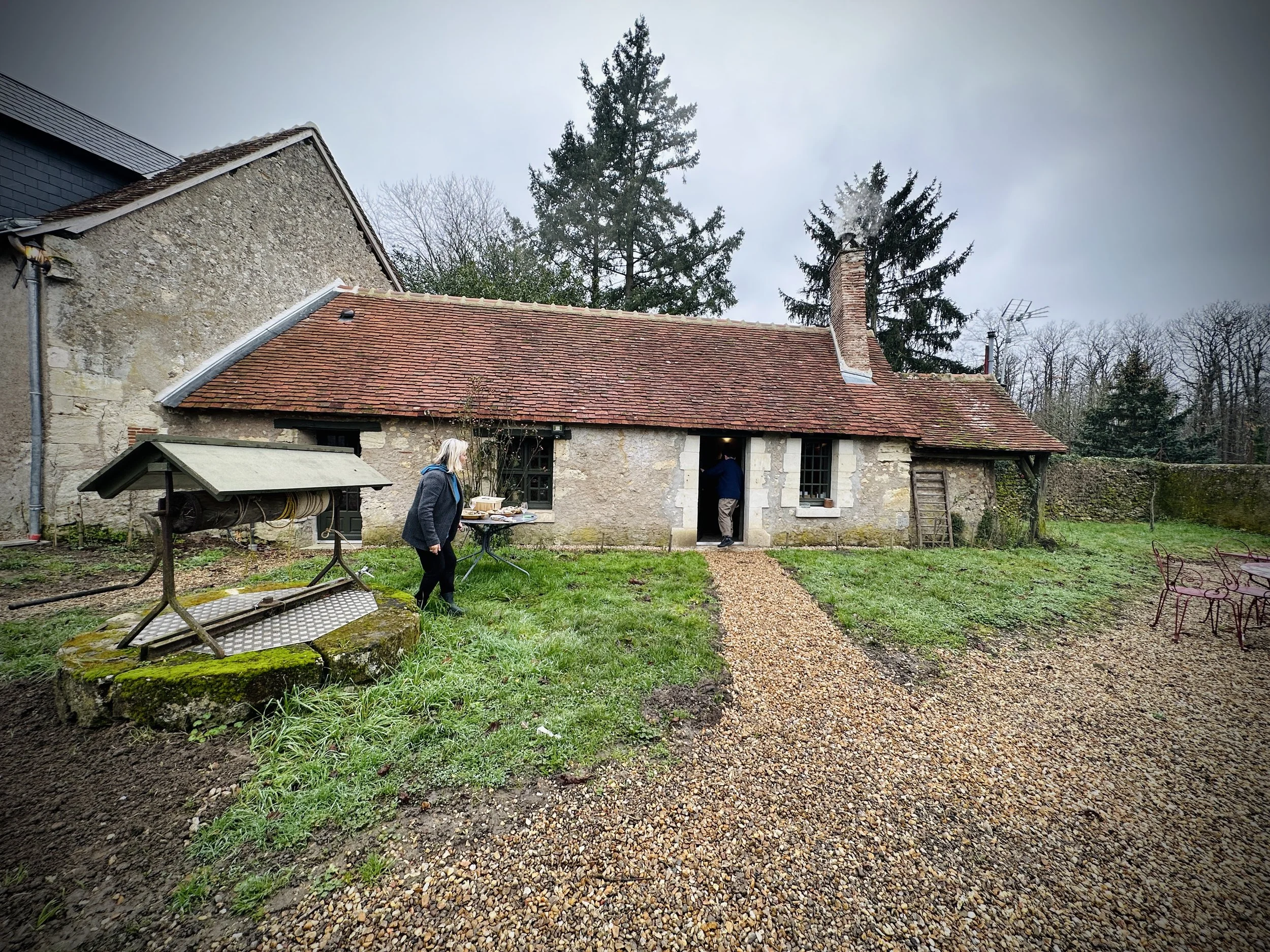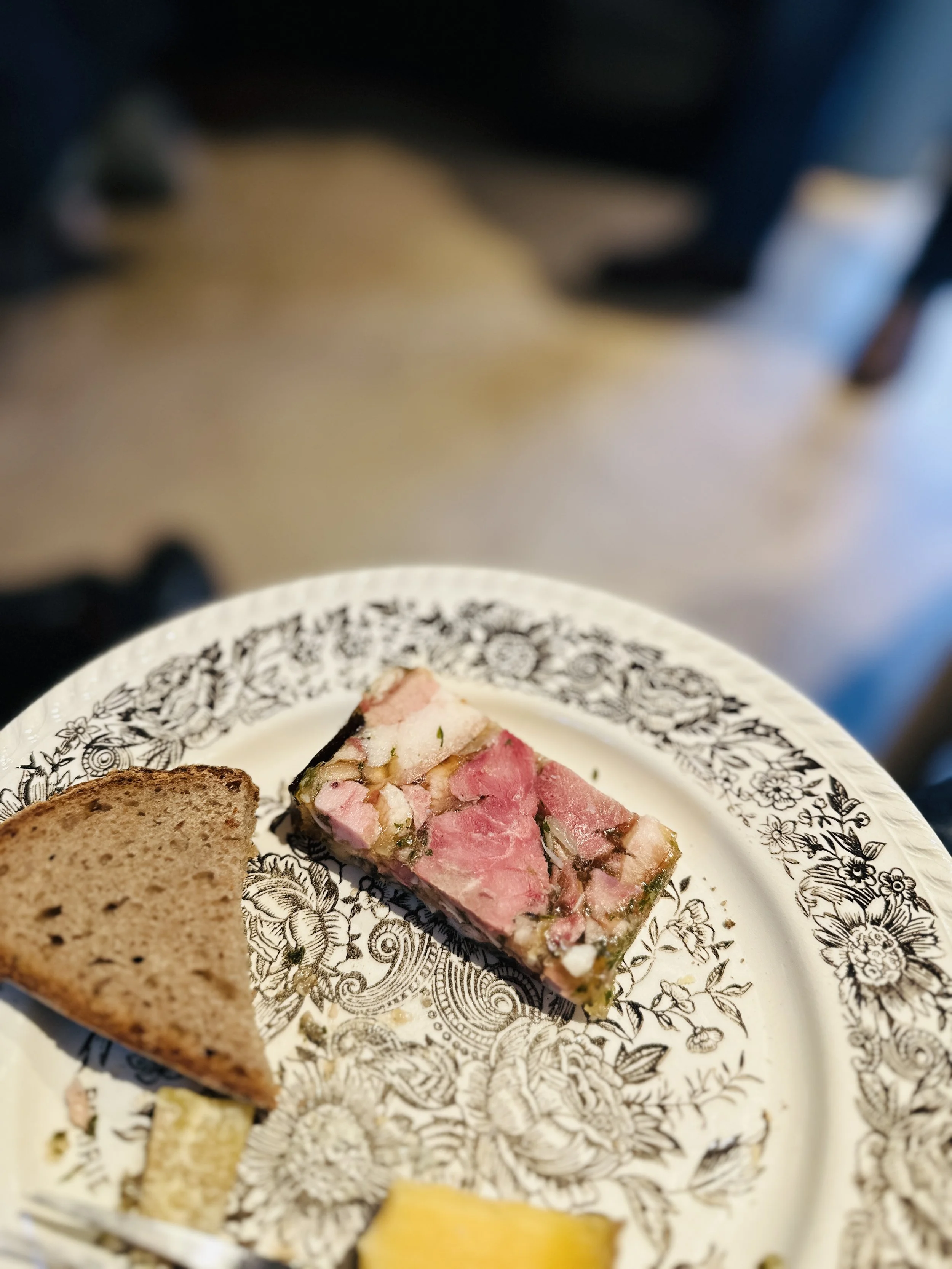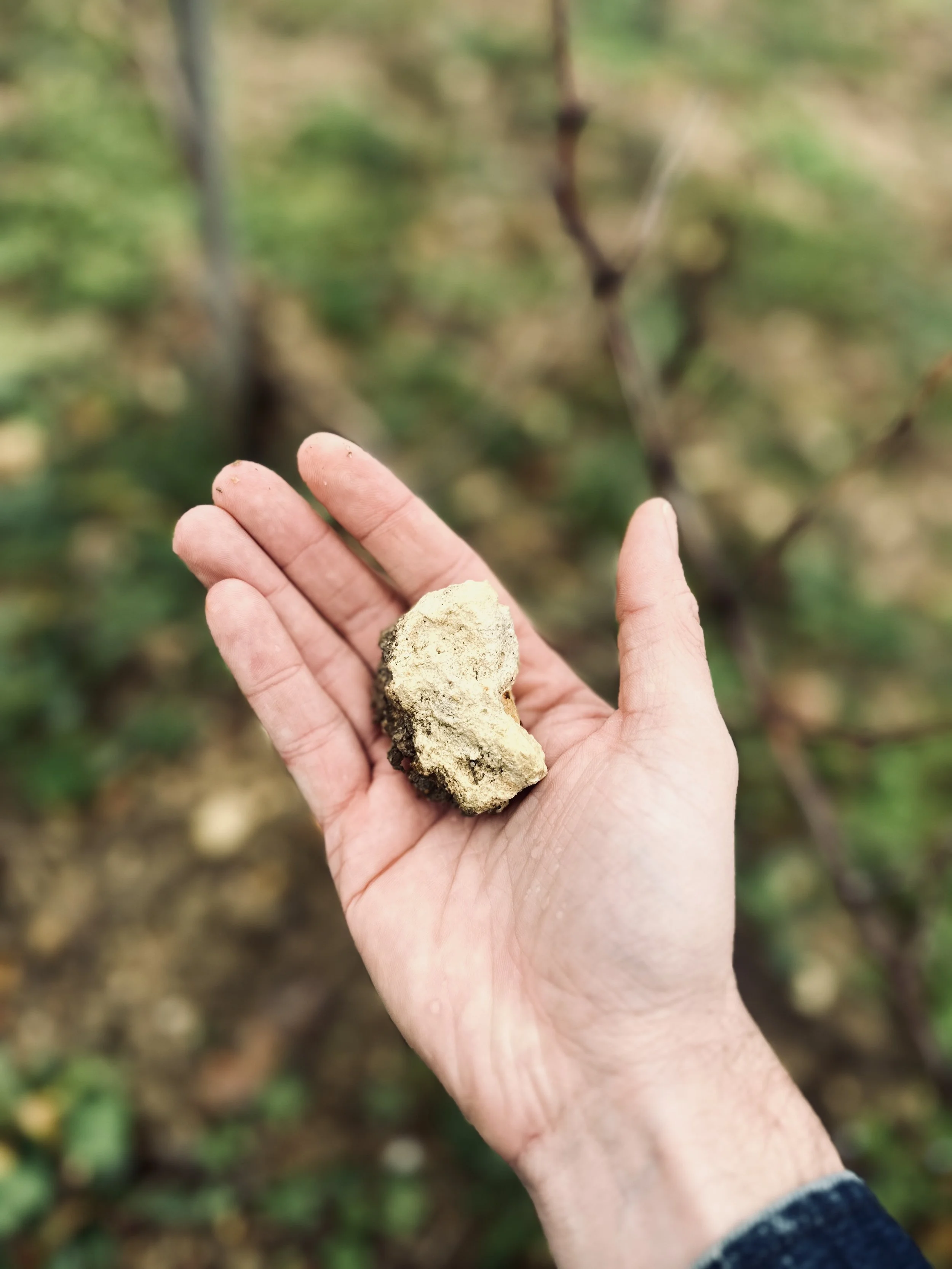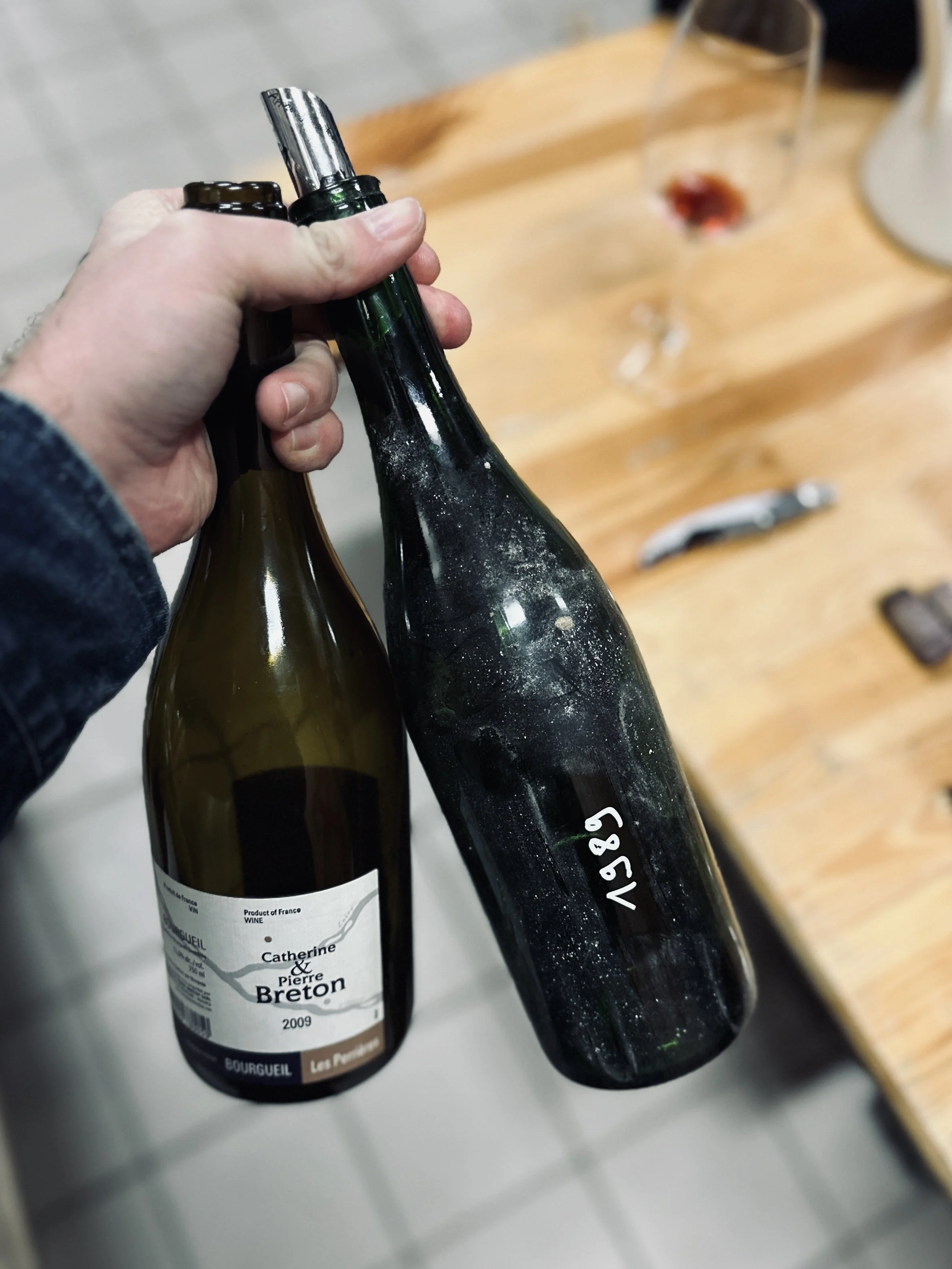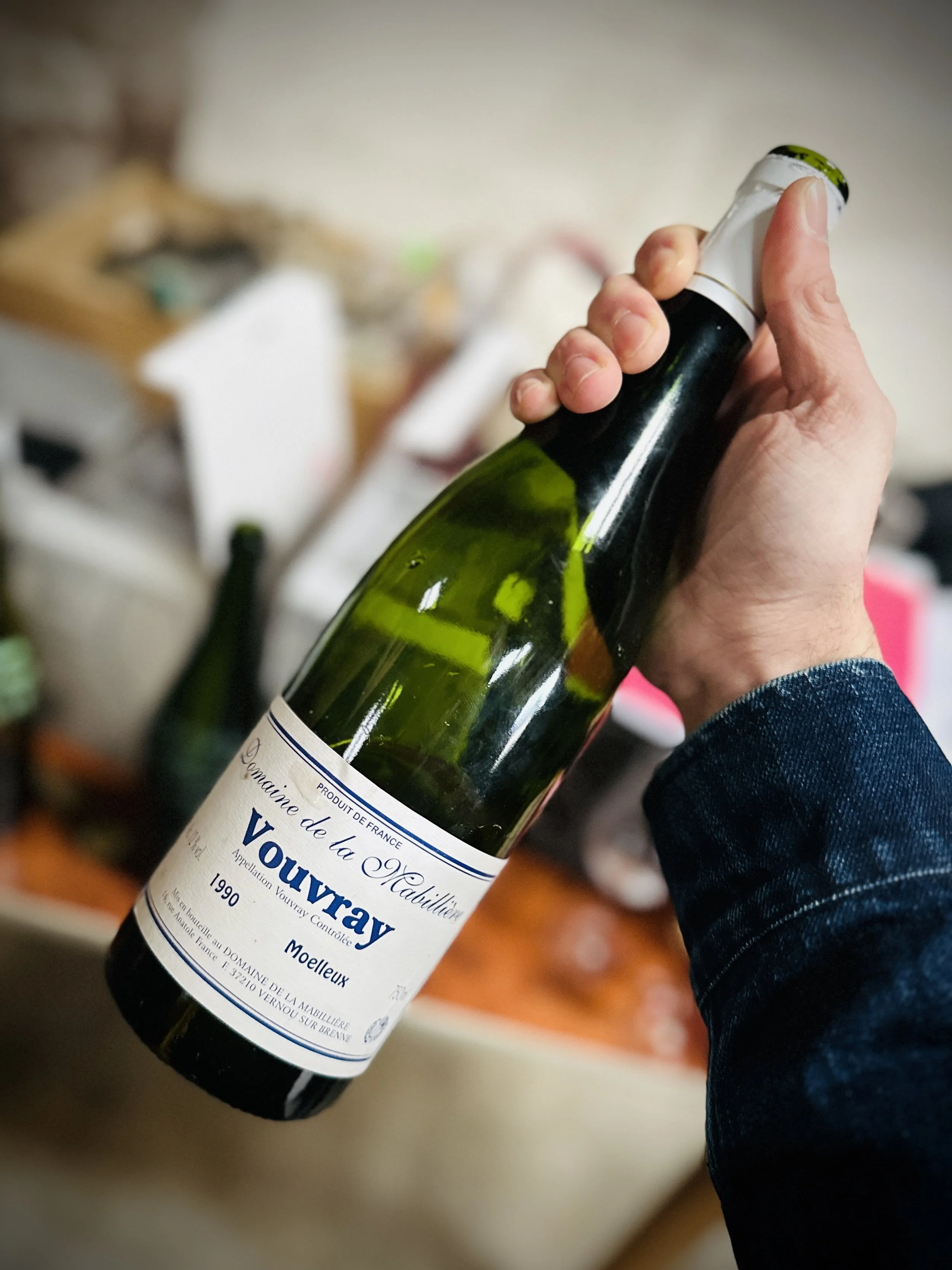DOMAINE BRETON
-
East of Bourgueil and north of the Loire River is the small town of Restigné, where you’ll find Catherine and Pierre Breton’s home, winery, and vineyards. Although their family’s winemaking history goes back centuries, they’ve been at the helm of their Domaine since the late 1980s, converting to organics in 1991. Shortly after, they started experimenting with biodynamic treatments but began pursuing certification much later. Catherine’s family comes from up the road in Vouvray, where they were able to take over a few optimal hectares of Chenin Blanc.
-
DescriptiIn the cellar, Pierre focuses mostly on their terroir-driven wines, while Catherine’s side project, La Dilletante (the Dabbler), is more about joyous and early drinking cuvées. Their wines are wild fermented, unfined, minimally filtered at most, and receive only minor doses of SO2. They’ve also been making zero SO2 bottlings (Nuits d’Ivresse) since 1994. Most of the wines are aged in neutral barrels either at the winery or at a second cellar carved from limestone underneath the vineyard; This peaceful place could make a monk out of anyone with its silent energy. on text goes here
-
With a name like Breton, the local word for Cabernet Franc, it’s no surprise their wines are among the most celebrated, sought after, and age-worthy in the Loire valley. Their children, France (and her husband Baptiste) & Paul, are starting to take over the vineyards and make their own cuvées. With their children’s infectious passion and diligence, the estate won’t only pass to the next generation without a hiccup, they’ll push towards new heights.
MORE FROM THE LOIRE: DOMAINE DE LA GARRELIÈRE | LAURENT SAILLARD
2023 TRINCH
This cuvée is made entirely from Cabernet Franc. These thirty-year-old vines are located in the commune Bourgueil on gravelly clay and limestone. Before fermentation, the grapes were cold macerated in stainless steel to emphasize aromatic intensity without over-extracting. Fermentation occurs in open-top wooden vats for several weeks before the wine is pressed off. After élevage in the same tanks, the wine is bottled with minimal SO2.
2023 LE CHENIN
Right across the river from Montlouis-Sur-Loire, you’ll find the small commune of Vernou sur Brenne in Vouvray. The fifty-year-old vines here are planted in clay and silex. The grapes are gently whole-cluster pressed into stainless steel for fermentation and a short élevage. The wine is filtered before bottling, but minimal SO2 is used. It typically doesn’t go through malolactic fermentation.
2023 AVIS DE VIN FORT
This cuvée is made from Cabernet Franc grown in Bourgueil on a combination of gravel, clay, and limestone. The vines are approximately fifty years given the grapes plenty of intensity. This is tempered by an extremely short maceration time, essentially saignée. Fermentation occurs in truncated wooden tanks, and after a short élevage, the wine is bottled unfined, unfiltered, and with minimal SO2.
2023 LE CABERNET FRANC
2023 ELLE EST PAS BULLE LA VIE
This wine is made from Chenin Blanc grown in Vouvray on clay and silex soils. The grapes are whole-cluster pressed into stainless steel for fermentation. When the wine is nearly dry, it is racked and bottled, where it completes fermentation under pressure. It is released at 5 bars and roughly 10 grams per litre of residual sugar. It is unfined, unfiltered, and sees no additional SO2.
2023 ELLE EST PAS BULLE LA VIE ROSÉ
This wine is made from Grolleau. The grapes spend five days on skins before being pressed off into tank for fermentation. When the wine is nearly dry, it is racked and bottled, where it completes fermentation under pressure. It is released at 5 bars, unfined, unfiltered, and without additional SO2.
2022 VOUVRAY PIERRES ROUSSES
This wine was made by Catherine & Pierre’s son Paul. The 55-year-old vines can be found in the lieu-dit of Pierres Rousses in Vouvray on clay and flint soils. The grapes are whole-cluster pressed into second and third fill barriques for fermentation. Due to high acid and low cellar temperatures, the wine doesn’t undergo malolactic conversion. After seven months of élevage, the dry wine is bottled with minimal filtration and SO2.
2023 LA RITOURNELLE
This cuvée is made entirely from Cabernet Franc from 30-year-old vines planted dominantly in gravel. The grapes are direct pressed into tank for fermentation and a short élevage.
2022 NUITS D’IVRESSE
This wine features Cabernet Franc for old vines (50+ years old) from several terroirs, primarily on clay and limestone. Pierre’s goal is to make a wine that doesn’t see any SO2 at any point in the winemaking, a feat he’s honed in on over the last thirty years. The grapes are destemmed into tank for fermentation on skins. After three weeks, the wine is pressed into barrel for a yearlong élevage. Unlike their other cuvées, it is bottled without any SO2.
2020 BOURGUEIL LES PERRIERES
This is the Breton Family’s flagship cuvée, yielding their most age worthy wine. The south facing vineyard boasts 80 year old vines planted on a sandy clay top soil with limestone beneath. The Cabernet Franc grapes are destemmed and fermented in wooden tank for three weeks before being pressed off into old barrel for an extended élevage.
2021 BOURGUEIL CLOS SENECHAL
Above the gravelly plateau of Galichets, you’ll find Clos Sénéchal high on the hillside. Pierre’s family has owned about a tenth (1.5ha) of this lieu-dit for roughly 200 years. The 50+-year-old vines sit in a mix of clay (argile éolienne deposited by winds) and brilliant limestone over tuffeau – the ideal combination for age-worthy Bourgueil. The grapes are mostly destemmed and fermented in open-top vat for several weeks. The wine is then pressed off for an extended élevage in foudres. Due to this wine’s inherent power, it is released later than most of their cuvées.
2018 CHINON BEAUX MONTS
The town of Beaumont-en-Véron is in the western part of Chinon. They started renting this plot in 2006, working with a young organic grower. The 40-60-year-old vines are planted in several parcels on typical clay and limestone. The grapes are destemmed and fermented in open-top vats before being pressed off into foudres and barriques for a year-long élevage.
2023 UN CHIEN DANS UN JEU DE QUILLES PINEAU D’AUNIS
2022 GROLLEAU
This cuvée comes from twenty year old vines in Ingrandes, Touraine. Whole clusters are placed gently in a large wooden tank before the grapes undergo carbonic maceration for three weeks. The wine is then pressed into stainless steel to finish fermentation. It is bottled in February for maximum freshness.
LA DILETTANTE SPARKLING VOUVRAY
This wine comes from the town of Vernou sur Brenne in Vouvray. The Chenin Blanc vines are on clay flint soils. The grapes are whole-cluster pressed into tank where the juice ferments until dry. The wine is then raked and bottled with a small amount of sugar and yeast for second fermentation in bottle. After eleven months on lees, the wine is disgorged.
